Some sneakers demand attention. Others earn it. The Adidas Tokyo falls firmly into the latter camp – a slimline, low-key minimalist sneaker that’s quietly been doing the rounds since the late 1960s. It’s not the most famous Adidas silhouette. It’s not the flashiest. But for those who care about design, heritage, and proportions, it’s a bit of a hero. Originally produced to coincide with the 1964 Tokyo Olympics (though confusingly, it wasn’t officially released until later), the Tokyo was never a headline act. More a hidden B-side track that only the obsessives knew about.
Until now.
Because lately, the Tokyo has been creeping back into view. A slow-burn return, helped by tasteful reissues, muted colourways and a cultural shift toward slimmed-down sneakers that don’t shout. It’s no coincidence that, at a time when chunky sneakers and techno-futurist footwear are starting to feel overcooked, the Tokyo is beginning to resonate again. It’s part of a wider move toward shoes with purpose, history, and a bit of humility.
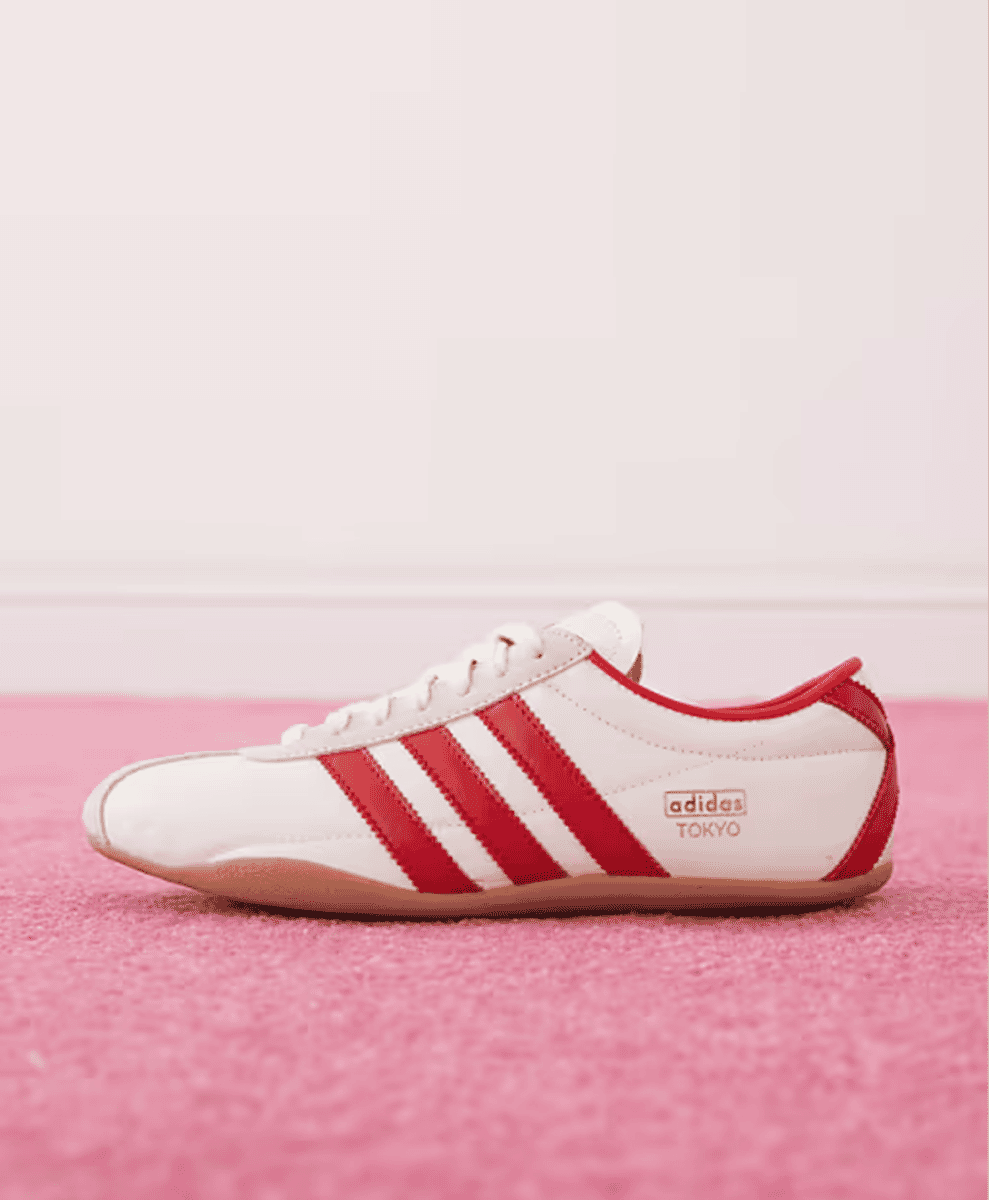

From track star to style sleeper
The Adidas Tokyo was born out of performance. This was Adidas at its most functional – a featherweight sprint shoe made for serious athletes. The design prioritised speed and stability: nylon uppers to cut down weight, suede overlays at the toe and heel for reinforcement, and a spiked rubber sole for grip and ground feel. It was a shoe designed for tracks and podiums, not pavements or fashion week.
But, as with so many classic sportswear silhouettes, its appeal eventually began to bleed into other spaces. The sleek lines, shallow midsole and minimal branding gave it an everyman aesthetic. Runners wore it, sure. But so did students, casuals, design-heads and anyone who preferred their sneakers quiet rather than performative.
It was also, crucially, flattering. The Tokyo’s proportions lend themselves to tailored trousers just as much as jeans. The slim last and clean profile avoid the bulbous look of most modern trainers. You could wear them with denim or with pleats, and they’d sit just right.
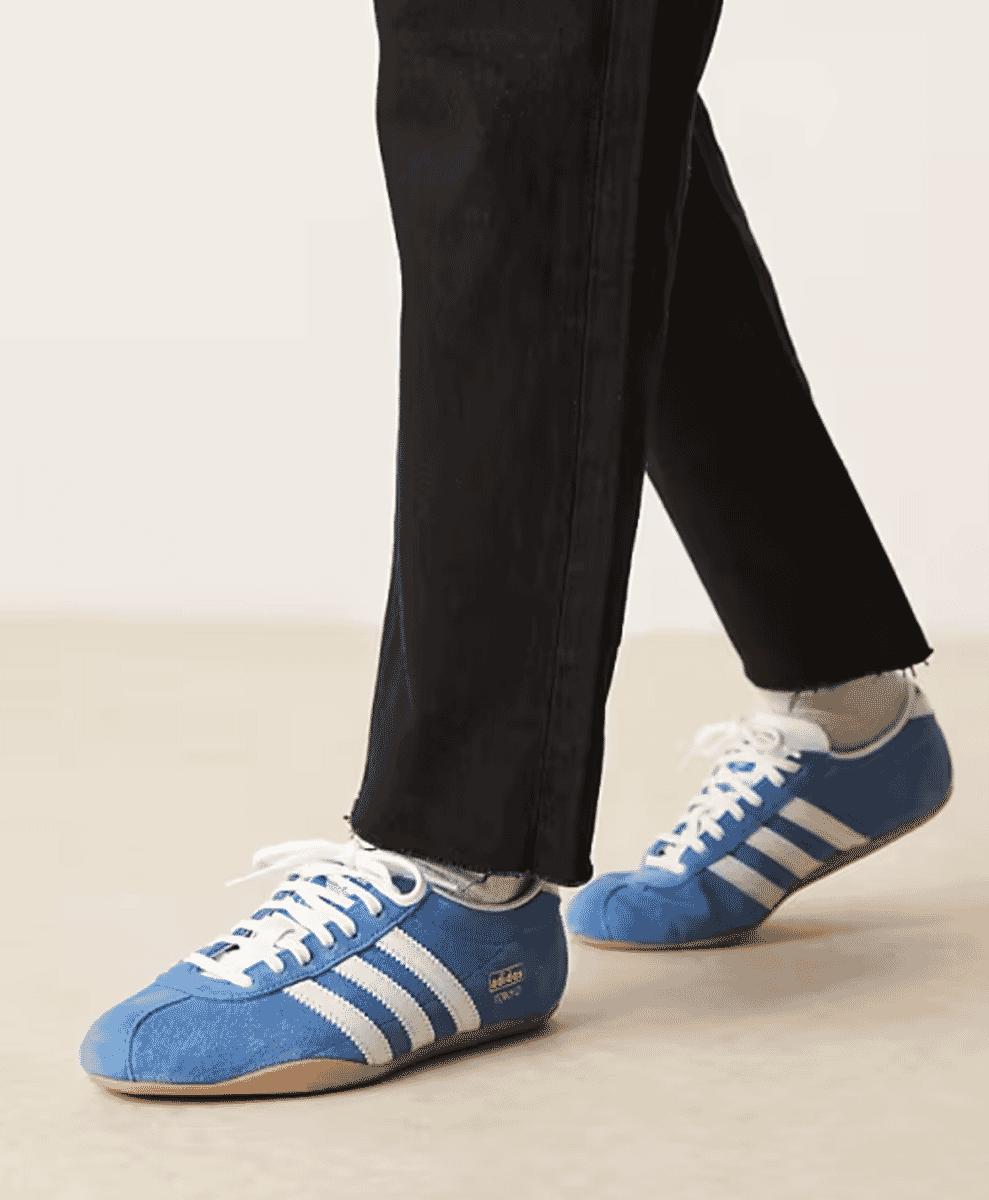
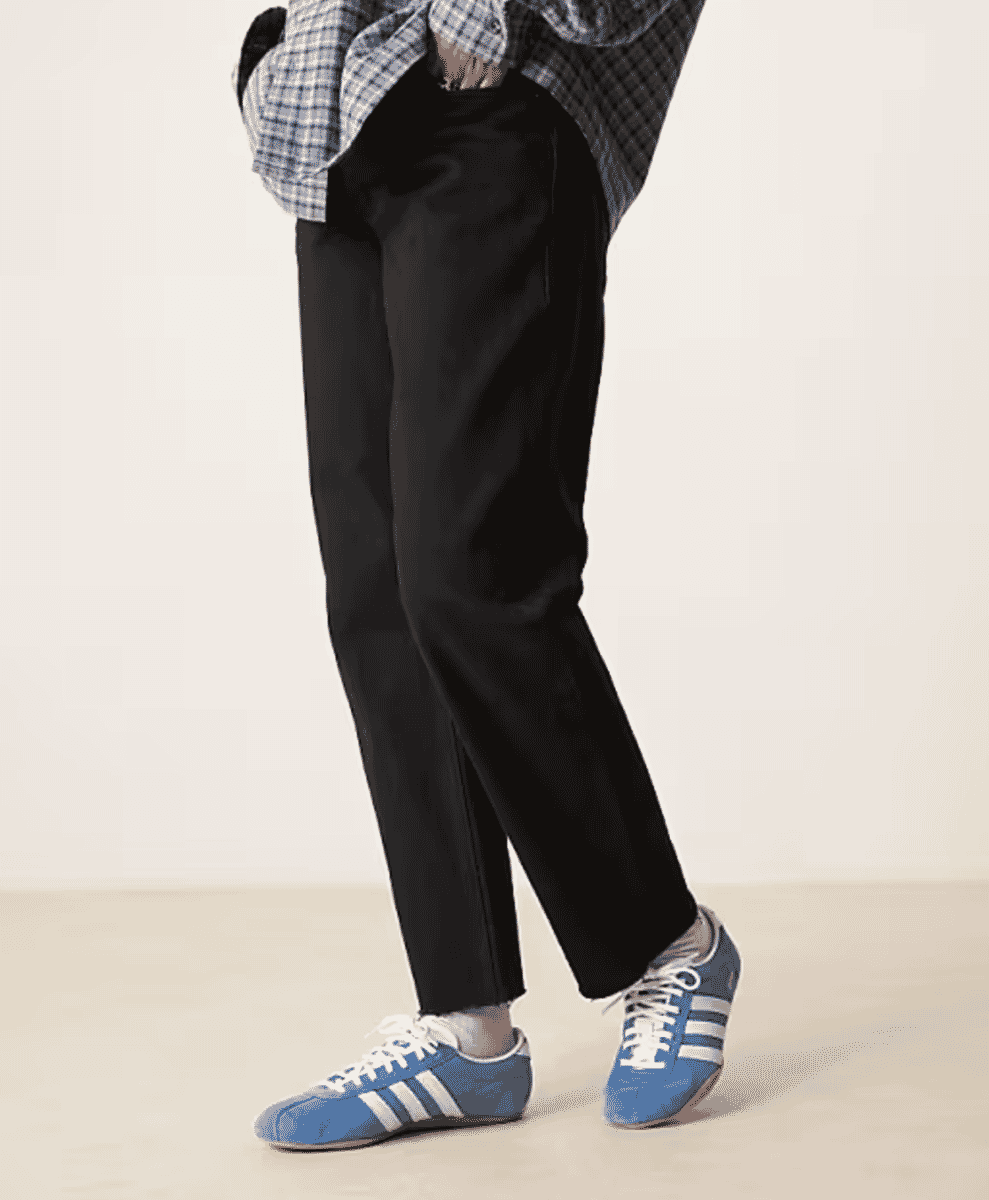
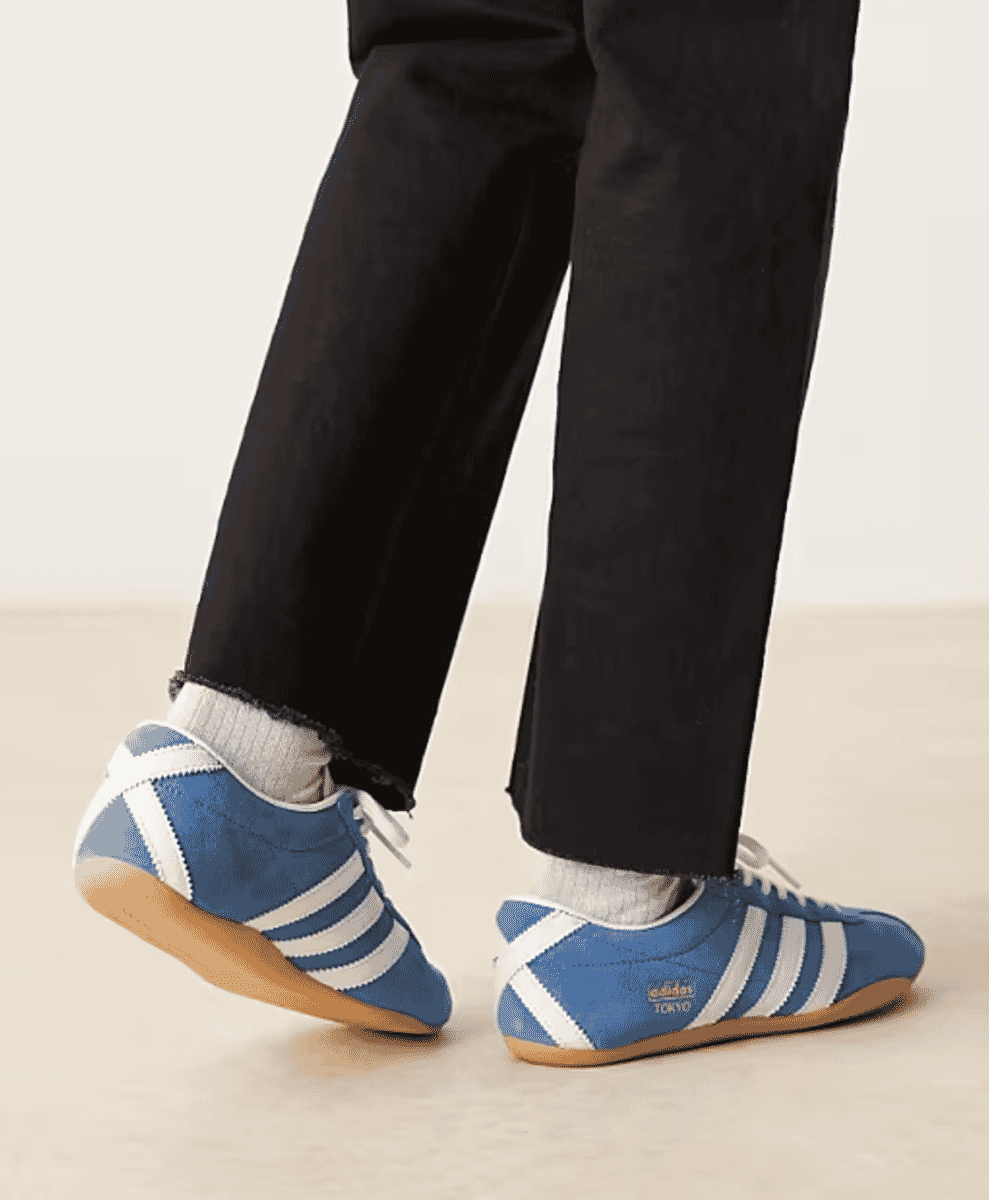
Reissues done right
Adidas has re-released the Tokyo in several iterations over the years, some truer to the original than others. The most recent versions, though, have struck a fine balance – retaining the shape and feel of the vintage model, but with just enough refinement to appeal to a 2025 audience.
They’re light. Really light. The nylon and suede construction gives them a breezy, almost slipper-like feel. And unlike a lot of retro trainers, they don’t feel like costume. They’re not trying to sell you on heritage. They just have it.
The design language is classic Adidas: low-slung, tapered, unfussy. The three stripes are present but not overbearing. The heel tab is subtle. Even the tongue feels considered – no bloated foam, no unnecessary stitching. It’s a shoe that feels like it was made by people who understand restraint.
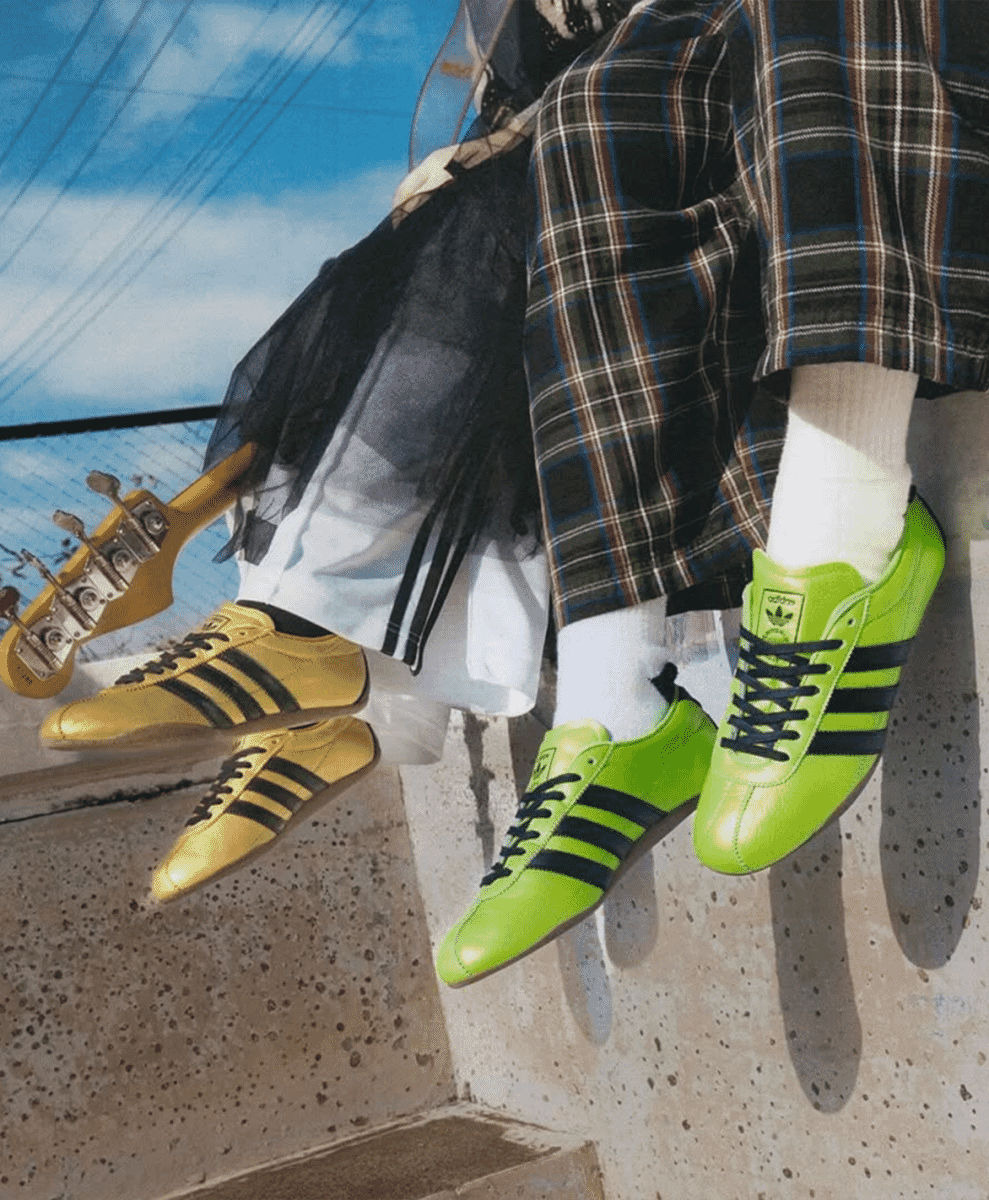
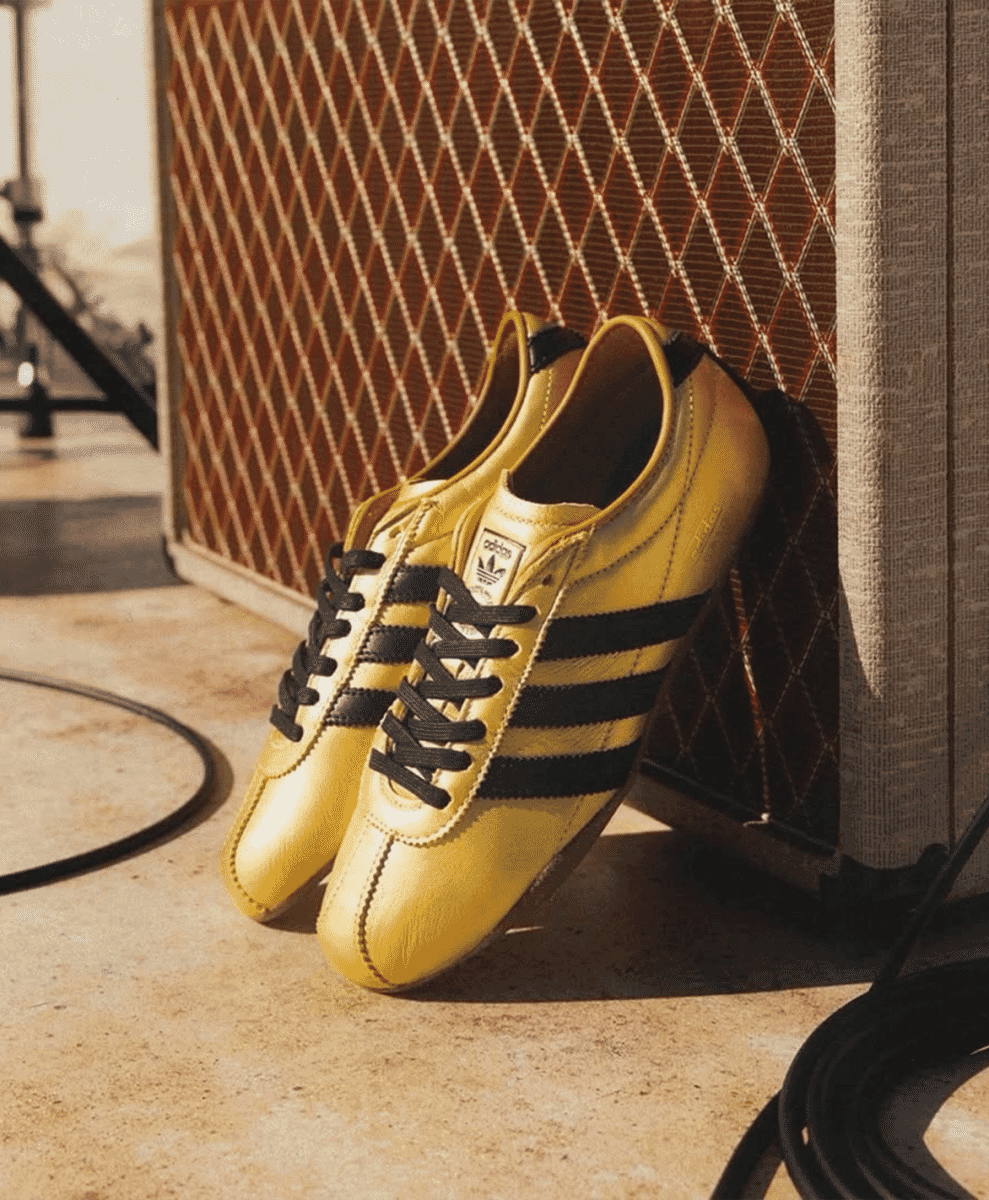
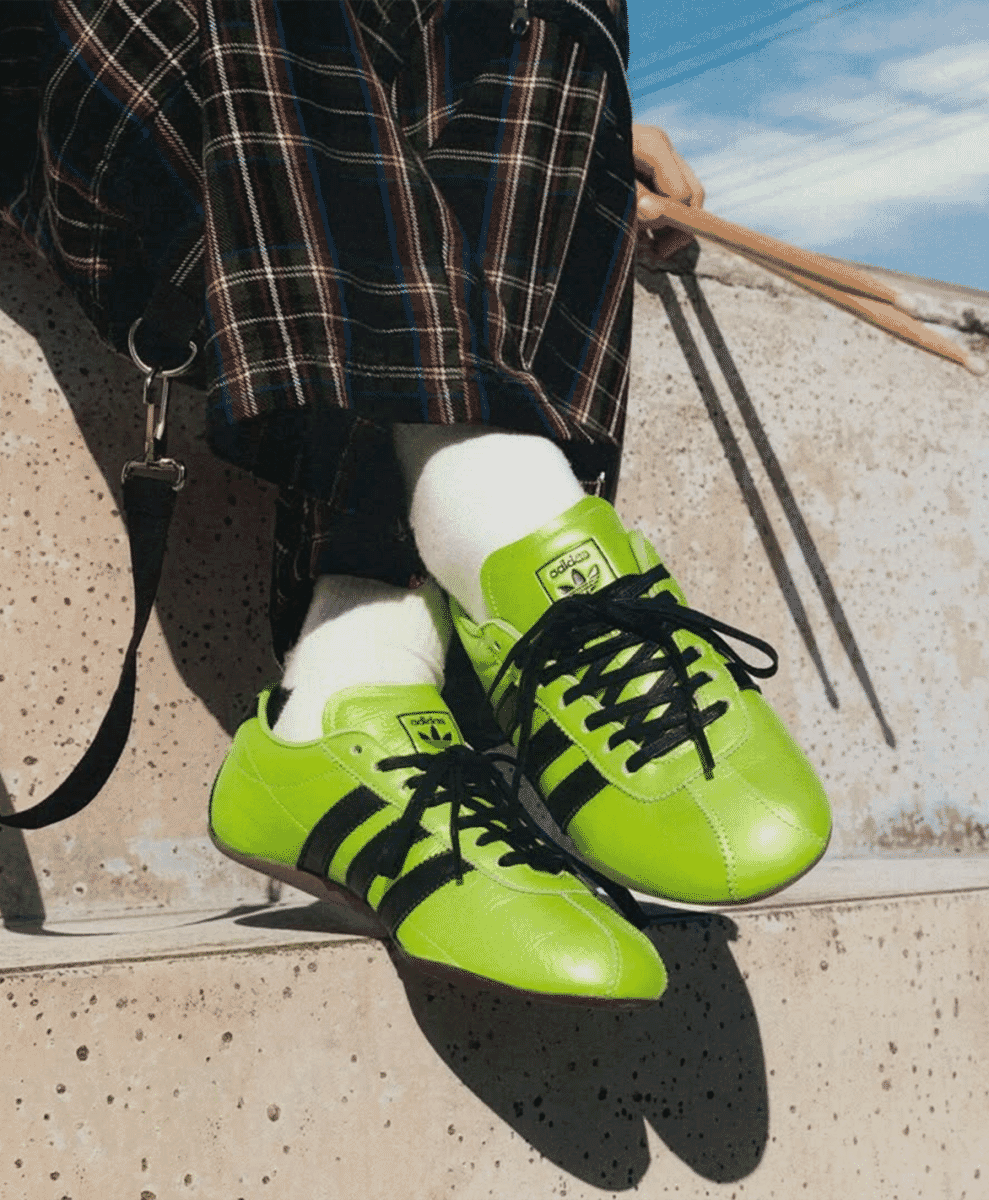
Colour theory
Part of the Tokyo’s new appeal is down to the colour palette. The original navy and white remains the flagship, and with good reason – it’s sharp, recognisable and plays into that vintage track aesthetic. But the new releases have explored more nuanced territory: rich burgundies, soft greys, deep olives and warm browns. These are shoes made to work with real wardrobes – the kind of shades that sit quietly under trousers, rather than peacocking at the end of your legs.
They also nod to a more European or Japanese way of styling sneakers – one that values subtlety over status. The sort of shoe you might spot at a coffee shop in Kyoto, or a design studio in Stockholm.
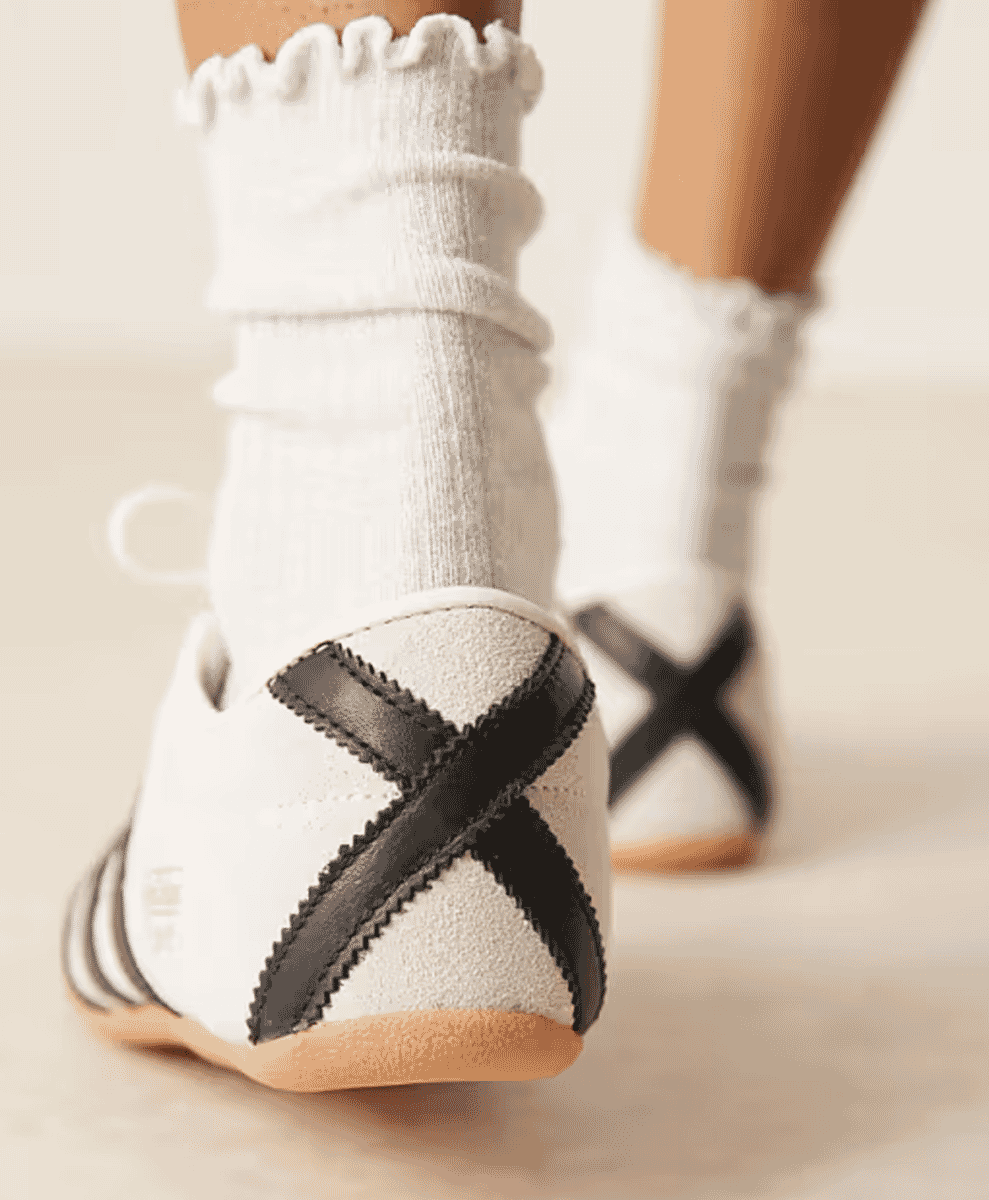
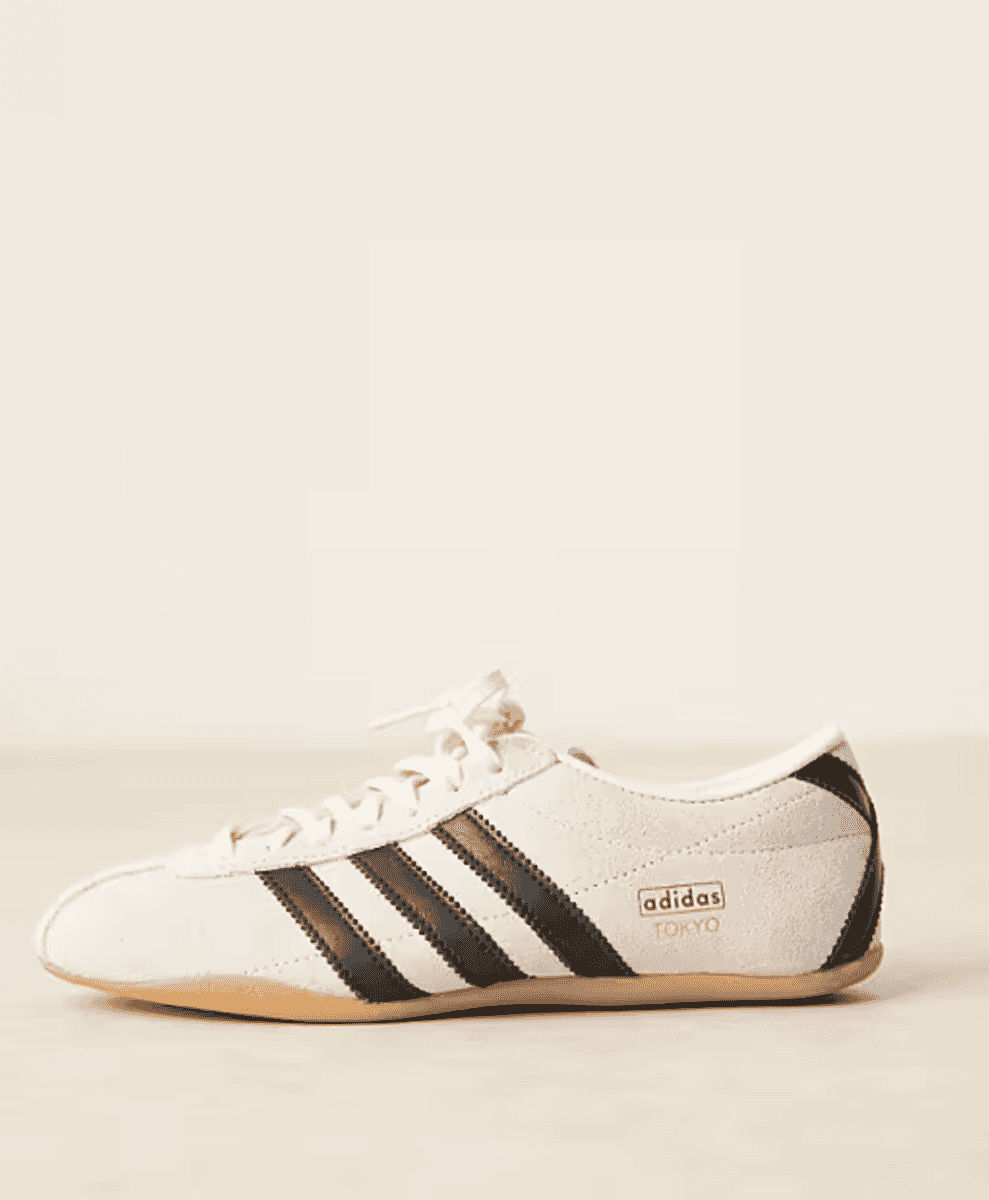
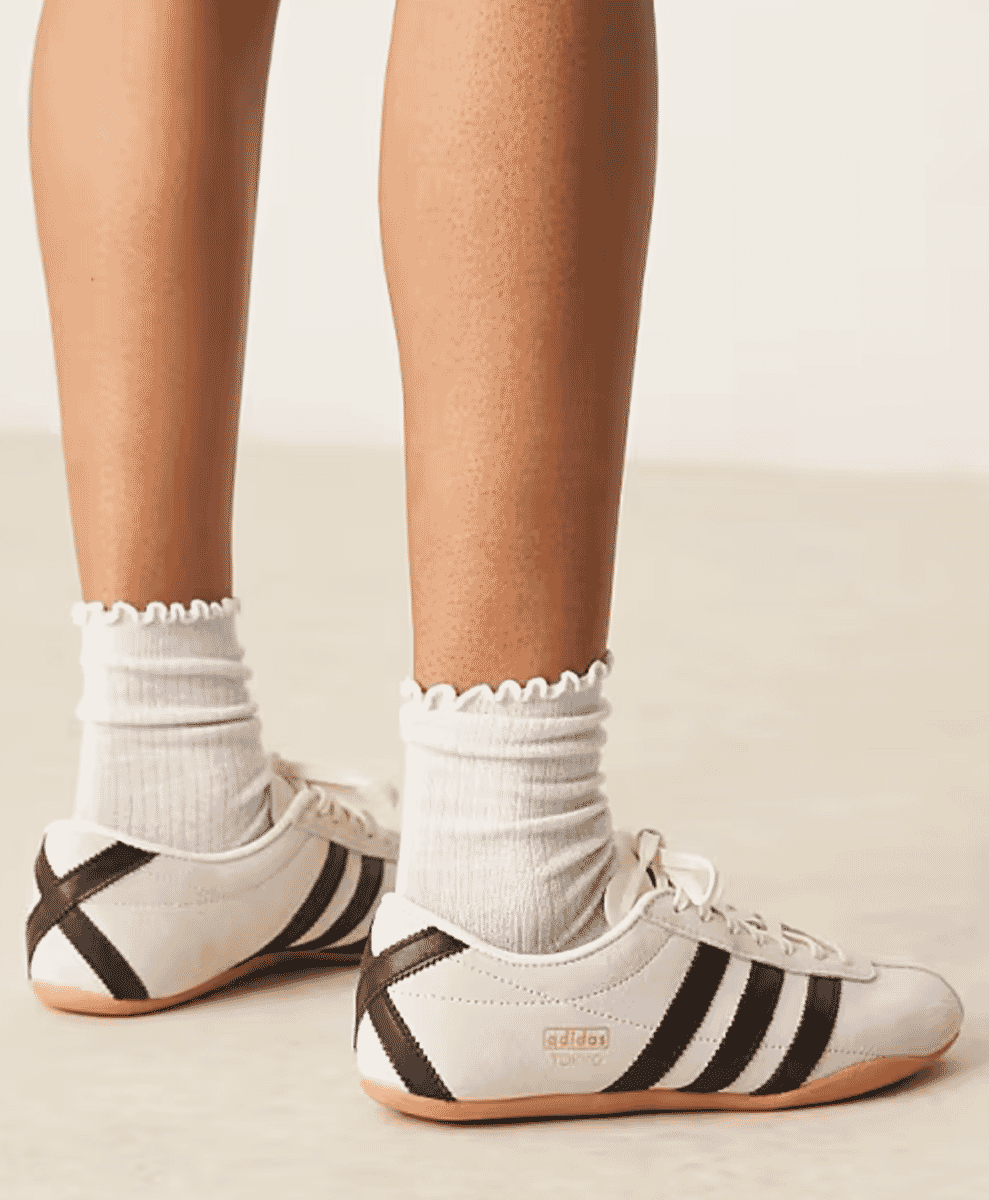
The cult of the slimline runner
We’re in the middle of a quiet revolution in sneaker culture. The maximalist era – all loud branding, layered panels and soles the size of cake tiers – is losing steam. In its place: a return to heritage runners, flat soles, and stripped-back detailing.
The Tokyo sits in good company. Alongside models like the SL 72, the Nike Daybreak and the Adidas Country, it feels like part of a lineage that values form-follows-function. These shoes were built to move. Built to last. And in their own modest way, built to look good.
What separates the Tokyo is how little noise it makes about any of that. It doesn’t have the Samba’s subcultural baggage or the Gazelle’s streetwear currency. It’s not the subject of endless TikToks or trend forecasts. It’s just… solid. A low-profile, high-integrity sneaker that fits neatly into the lives of people who know what they like.
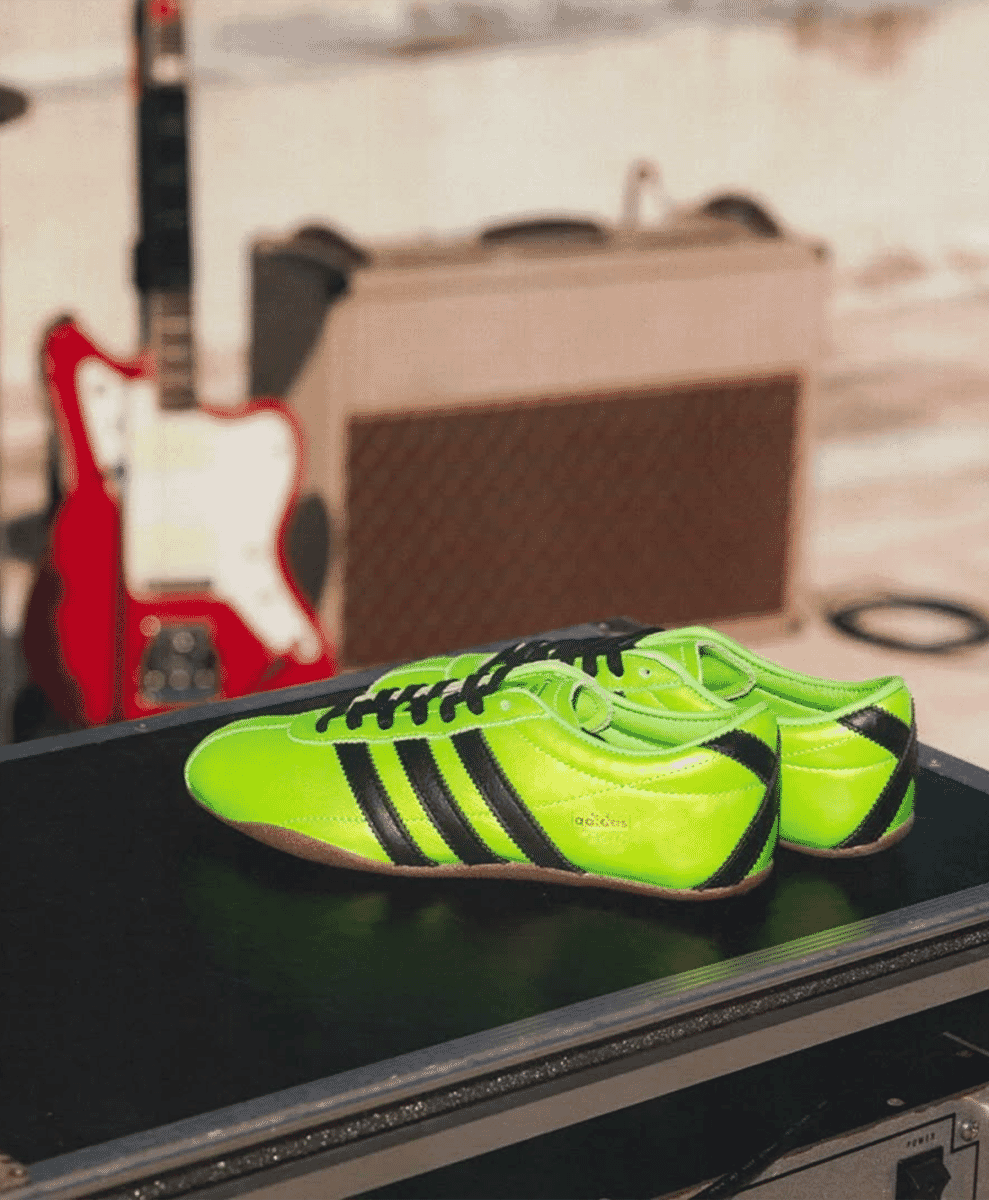
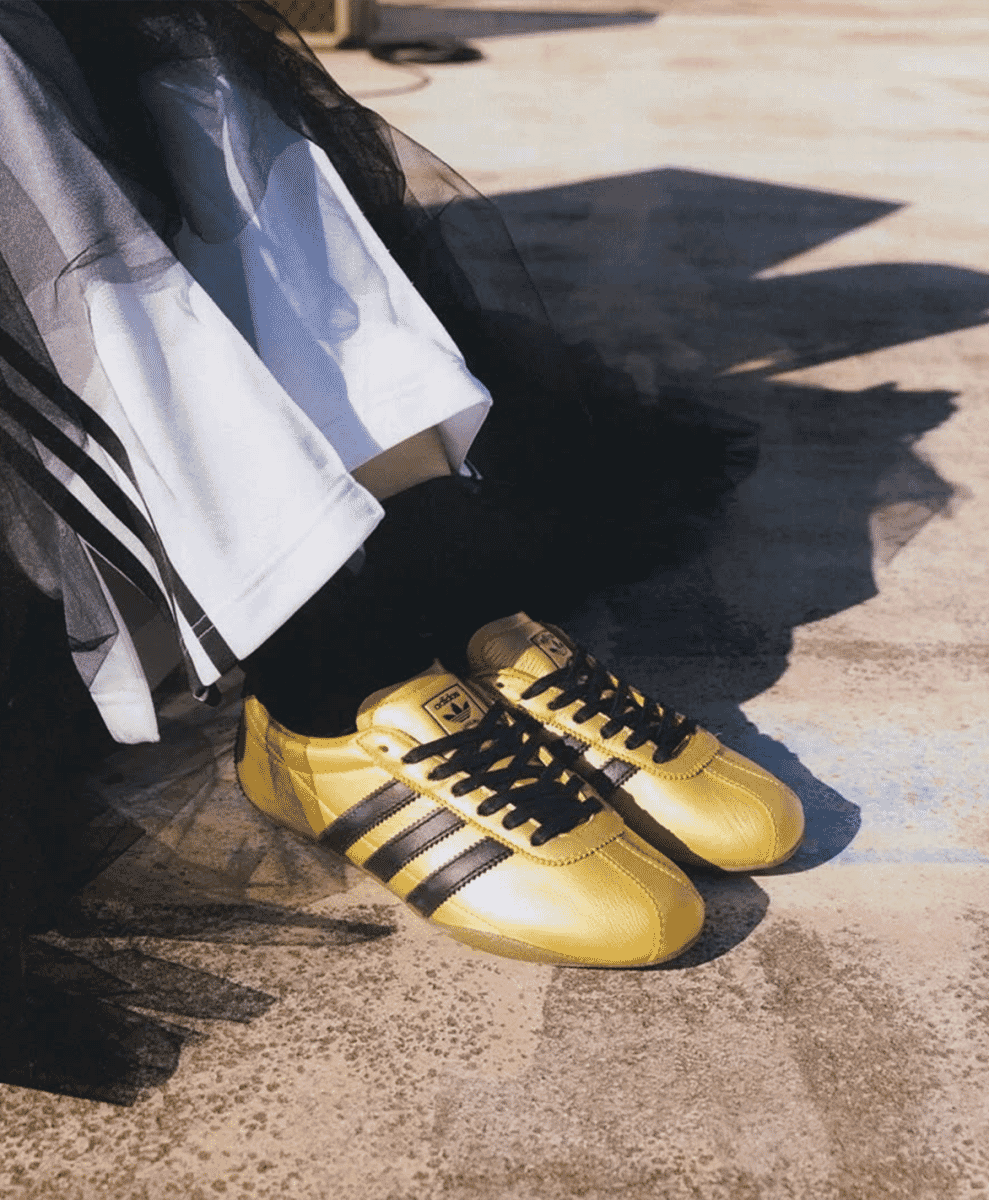
Why the Adidas Tokyo still matters
The Tokyo’s longevity isn’t about nostalgia. It’s about proportion, simplicity, and context. In an era where so much design is preoccupied with disruption, there’s something refreshing about a shoe that just gets the basics right.
It’s wearable, but not boring. Historic, but not dusty. And it manages to feel relevant without trying to be. That’s no small feat, particularly in the world of sneakers, where trend cycles spin faster than ever and most releases have the shelf life of an avocado.
If the SL 72 is enjoying a renaissance, the Tokyo feels like the connoisseur’s alternative – a little rarer, a little more understated, and arguably a little cooler.
Adidas Tokyo: an icon in lowercase
Some icons arrive with fireworks. Others just appear one day in your wardrobe, and never really leave. The Adidas Tokyo belongs in the latter category. It’s the sort of shoe that earns its place quietly – not with hype or celebrity co-signs, but with sheer, unfussy wearability.
It doesn’t scream for attention. It doesn’t try to reinvent the wheel. What it offers instead is something increasingly rare: a trainer that feels honest. One that you can wear into the ground, then buy again. One that doesn’t need styling tricks or Instagram filters to make sense. Just good trousers. Maybe a good coat.
In the end, that might be the Tokyo’s greatest strength. Not that it’s trending – but that it doesn’t care.
Next up: The best minimalist sneakers to buy this year.




